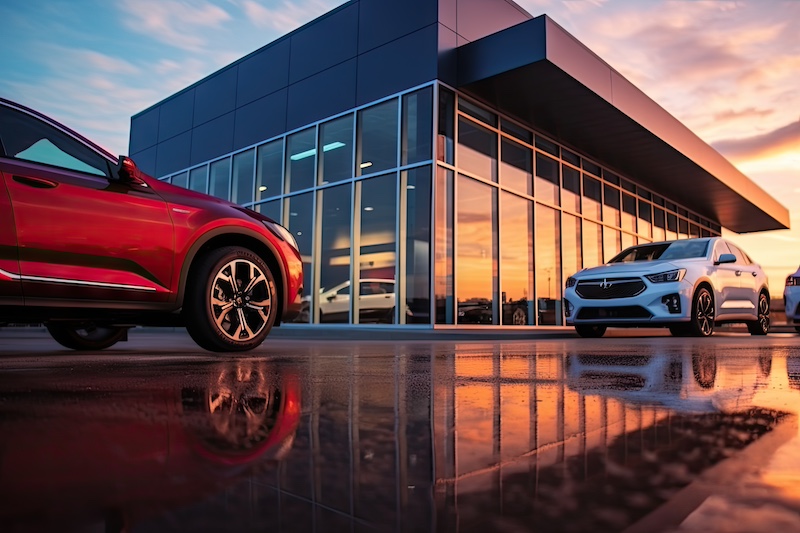It’s hard to believe that virtually no one understood the concept of e-marketing just 15 years ago. In 2010 the digital transformation of every aspect of advertising, marketing and communication is mind-boggling. I asked CBC’s e-marketing expert Greg Johnson for a current overview of ‘advertising in the E-lane’ and for his thoughts on the future growth of digital marketing.
Dealer magazine: Greg, what percentage of total advertising budget are most dealers spending on e-marketing this year?
There are some dealers in smaller markets spending very little on e-media, but I would say most of the dealers we work with are spending anywhere from 20% to 30% of their total budget on e-related advertising.
Dealer magazine: That’s more than double of what was being spent just 5 years ago.
The growth has been exponential, and we see it continuing to take a larger share of budgets in the coming decade. Dealers might be spending as much as 40-50% of their budgets by the end of this decade. Now keep in mind that I’m including total e-spends including web site development, maintenance, email marketing, SEO, SEM, and social networking.
Dealer magazine: Where did this budget come from?
Most of the spend has come directly from print. Prior to 1975, almost 60% of dealer ad budgets went to print. In the 80’s, thru the mid-nineties, almost half of the print budgets slid into broadcast. Then, beginning in the late 90’s, dealers gradually shift dollars from other categories into digital. Today, digital marketing has replaced most of traditional print such as newspaper ads, yellow pages and the like.
Dealer magazine: Where is the e-money being spent?
There are six basic sub-categories: web site development and maintenance, digital advertising such as banner ads and third-party referral web sites, search engine optimization, search engine marketing, e-mail and text marketing, social marketing such as Facebook, MySpace and Twitter. Another developing sub-category is mobile-marketing. The lion’s share of dealer digital spends is apportioned to web site development and SEO, but of course it varies greatly depending on the geographic location and size of the market.
Dealer magazine: I know it’s hard to believe, but there are still quite a few dealers out there who have not gotten aboard the e-train. Where do you jump-on?
My first recommendation would be to get a good understanding of the investment necessary, the potential benefits and the importance of merging e-efforts with traditional advertising. I know Dealer/Digital Dealer magazine puts on the Digital Dealer Conference twice a year. It’s a great forum for attending workshops and meeting up with some of the top consultants and experts in the Internet world, specifically engaged in the automobile business.
Dealer magazine: Assuming a dealer is considering changing web site companies, what tips would you pass along?
Greg: First of all, make sure you go with a web site development company who specializes in the automobile business. There are a number of great companies out there. A general web site developer will not have the tools and experience necessary to compete in the current state-of-the-art automotive Internet field.
I would talk with at least three different companies before making a decision. Ask dealer friends for their opinions including those in your 20 group. Some of the things you want to discuss are:
- How your web site will merge with your existing computer system, so that consumer searches will bring up pages of inventory on your site, as opposed to a third party site.
- Easy-to-use self-administration areas on your web site that will allow authorized personnel at the dealership to upload and update vehicle specials without going through the website company.
- Robust SEO that will be built into the website to insure the highest possible level of recall in consumer searches.
- The ease in navigation. Less is definitely more when it comes to navigation by E-challenged consumers. You want to make your site easy enough for a beginner to access basic information.
Dealer magazine: What are some of the basic elements every web site should have?
What I call basic ‘phonebook’ info. You should consider incorporating your address and phone number with your logo so people don’t have to click on drop-down boxes just to get basic contact info. Remember, many people are using searches on the Internet in place of traditional phonebooks. Make it easy.
If you’re featuring vehicle specials, you should have at least a thumbnail picture of the vehicle (with click to enlarge and details) along with either a price offer or an invitation to get an instant price quote or Internet quote.
Dealer magazine: What does it cost to get a well-designed web site these days?
Most of the automotive web site companies have moved away from charging large development fees up-front in favor of amortizing costs over a longer contract. Typically, you can pay anywhere from $1,000 a month to $5,000 a month, depending on the complexity, which includes a reasonable amount of maintenance.
Most web site companies also offer SEM programs, which can often be packaged with the site fees. Of course that is an entirely different category of expense based on market size, keywords and bidding aggressiveness for those words.
Dealer magazine: What about web site videos?
Greg: Videos on your web site are the fastest growing aspect of site development. It’s easy to do and it adds a very dynamic dimension to the site. You can use videos for basic dealership information, service, and of course vehicle specials. I would just caution you to make sure your video quality is decent. A bad image has a negative effect on any brand. You may consider working with a professional video editor to take video shot by someone in the dealership, and then editing it to make it look a little more professional.
Dealer magazine: What about social media sites such as Facebook?
First of all, don’t jump into this unless you really understand the technology. While you may be excited about the potential of adding a thousand ‘fans’ to a Facebook site, you may not be physically prepared for the monitoring of all the activity that can occur very quickly on a site. You have to have thick skin and understand that not everyone is always going to give you incredibly glowing reviews. You’ll get the ‘warts and all’ with open authoring on a social site. Think and plan before you jump into it.
Dealer magazine: Any closing thoughts?
One of things you need to consider in development of a web site is ‘optimization for mobile applications.’ This is growing by leaps and bounds. Most traditional sites don’t work well on I-Phones and mobile devices. As time goes on, this type of optimization will be pretty much academic, but it is not there yet. This is especially true if you have a home-grown site that has not been updated in awhile.
If you’d like a free copy of Greg Johnson’s latest White Paper: “10 Ways to Maximize Marketing E-ffectiveness” send me an e-mail with ’10 Ways’ in the subject line and I’ll be happy to send along.







